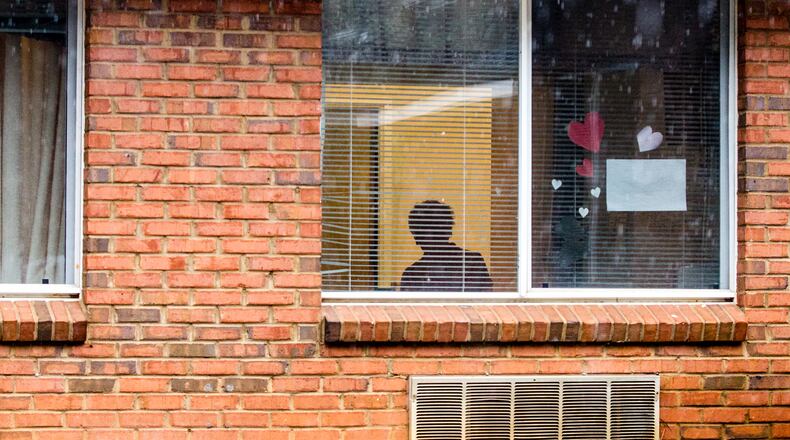Pointing to discrepancies in COVID-19 death counts from Georgia’s nursing homes, Sen. Raphael Warnock and Rep. Hank Johnson have asked federal investigators to examine inconsistent reports and provide the public with a true accounting of the losses.
“Accurate and timely COVID-19 data is critical if we have any hope in combatting this pandemic and returning to normalcy,” Warnock and Johnson, both Democrats from Georgia, wrote in a letter to the Department of Health and Human Services. “It is also critical that Georgia families have an accurate picture of the effects of the pandemic on places where they entrust their loved ones.”
The letter pointed to wildly different counts reported by some facilities to state and federal agencies and called the differences “deeply concerning.”
While some of the differences stem from the reports to the federal government starting weeks later than the state’s counts, other inconsistencies can’t be explained by differing reporting periods, The Atlanta Journal-Constitution has found in its own review. Through the pandemic, the AJC has documented a series of inconsistent reports in the COVID-19 data for hard-hit long-term care homes.
Georgia Department of Public Health officials have relied on the daily reports posted to the Department of Community Health website to track trends.
“These numbers, while they may be imperfect, provide the Georgia Department of Public Health with an overall picture of the impact of COVID-19 on nursing home populations and inform best practices for infection control,” DPH said in a statement Monday.
However, the Department of Community Health, which licenses and inspects long-term care homes, confirmed Monday that the state’s senior care facilities aren’t required to report to its tracking system, and some don’t.
Still, in theory, the state reports should show more deaths than the federal reports, because the state data is supposed to be cumulative from the start of the pandemic. The federal government didn’t begin requiring nursing homes to report the data until May.
Overall, DCH is reporting more COVID-19 deaths. The most recent reports to DCH report showed 3,489 among nursing home residents, about 21% of all Georgia’s confirmed COVID-19 deaths so far, DPH said. That total doesn’t include hundreds more than took place in assisted living communities and large personal care homes.
The most recent federal reports show 3,165 Georgia nursing home deaths through March 21, the most recent information available.
Yet, the AJC found dozens of cases where the number of deaths was significantly higher in the federal reports than in the state reports. With some homes, the federal numbers were at least two times greater than those in state reports.
Some differences were the result of reporting errors.
For example, Memorial Manor Nursing Home in Bainbridge is shown as having had 11 COVID-19 deaths in its state report, but 74 in the federal report. The home said the correct number is 11, but confusion over the reporting process inflated its figures.
Buchanan Healthcare Center, in Buchanan, is shown as having four deaths in the state report, but 61 in the federal report. That home said the correct number is four, and also attributed the difference to problems with reporting to the federal system.
In other cases, homes that previously reported deaths dropped off the state report with no explanation or began reporting decreases in the number of deaths, rather than cumulative totals.
Steve Schaefer
Steve Schaefer
Some homes filed statistics indicating their homes were sanctuaries in the pandemic. Families tracking the DCH reports on Dunwoody Health and Rehabilitation Center thought the home was virtually COVID-free until an outbreak that dated back to April was finally reported in July. At least 29 residents died of COVID-19, most in July and August. The state later sanctioned the home for failing to properly handle the outbreak.
Rosemont at Stone Mountain hadn’t reported any COVID-19 deaths until one day in January, when it reported 21 to the state. That number covered the entire pandemic, the home later told the AJC.
In their letter, Warnock and Johnson said one large nursing home provider, PruittHealth, appears to have underreported COVID-19 deaths at three dozen facilities, saying its total deaths for those homes were 102 in the federal report but 408 in the state records.
PruittHealth said in a letter responding to the officials that many of these homes were hit hard early in the pandemic, and that explained why totals differ. PruittHealth said it worked to be one of the nation’s most transparent nursing home companies by posting detailed reports on its website for every facility. It also said it took the concerns “very seriously” and pledged to work with the officials and agencies going forward to explain reporting differences that may account for the discrepancies.
Tony Marshall, president and CEO of the Georgia Health Care Association, said most of Georgia’s long-term care homes worked hard to report accurate figures to both systems. Sometimes, numbers were keyed in inaccurately or confusion about changing reporting requirements led to some delayed or inaccurate entries. But he said as a whole, the trendlines accurately reflected what was happening across the state, with spikes appearing in the reports when the rest of the state was showing an increase in cases.
Accurate reports were important early on, he said, so the state could respond. But he said the data will also help shape policies and protocols for the future.
Amber Schmidtke, a public health researcher and former Mercer University professor who tracks Georgia’s epidemic on her widely read blog, said good data is important to shape both policy decisions for the future and to grade responses of the past. Plus, she said public health can only be successful when the public has confidence in public information.
She said Georgia has struggled with basic data collection on a variety of metrics. “I’m hopeful that we will see better investment in public health in the future to improve public health data collection even beyond the pandemic,” she said.
About the Author



